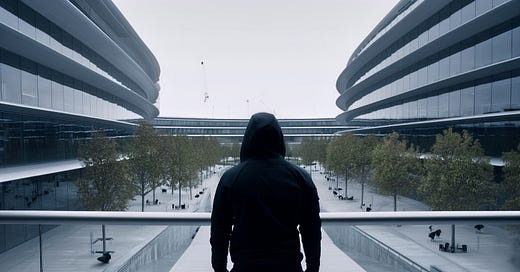Mapping Surveillance Zones in Your Head on The Fly
See the Field Like an Operative, Before It Sees You
When you’re in hostile territory or just walking into a high-risk zone, you don’t have the luxury of pulling out a tablet or drawing diagrams. You’ve gotta see the field, feel the rhythm, and build a mental map in real-time.
This is how covert operatives map surveillance zones in their mind as they move through it, without tipping their hand or wasting a step.
As an operative on a mission or a civilian trying to be vigilant in a sketchy environment, mapping surveillance zones in your head gives you an edge.
For operatives, it’s about staying ahead of threats, avoiding exposure, and controlling the environment without needing tech or backup.
For civilians, it means spotting danger early, avoiding blind spots, and reading the flow of a space to stay safe.
You don’t need a mission to use this, awareness is survival, and the ability to see what others miss can keep you out of trouble before it even starts.
Step 1) Establish the Baseline
This is the first thing you do the moment your boots hit the ground. You’re not just looking, you’re reading. The space has a story, and your job is to catch it before anyone knows you’re paying attention. It doesn’t matter if it’s a corporate office in Dubai or a grimy alley in Caracas, every place has a baseline rhythm. What’s normal? Who belongs? What’s out of place? Lock that down fast, because anything that breaks that rhythm later is a red flag waving just for you.
Scan for entry/exit points: Know every way in and every way out, even the ones most people don’t notice, maintenance hatches, service doors, roof access. If it’s a hole, it’s a way out.
Note fixed surveillance assets: Cameras, motion detectors, laser grids (anything mounted isn’t moving) but it sees more than people think. Most have blind spots, clock them.
Observe human patterns: Who’s standing, who’s moving, who’s watching the watchers? If someone’s posture or attention doesn’t match their job, odds are they’re not what they seem.
Once you’ve got the baseline, you’ve got the foundation to build everything else. It’s your “before” picture, so when something shifts, even a little, you’ll spot it instantly. That’s the kind of awareness that keeps your face off a wall and your name off a list.
Sweep with your eyes like you’re just casually observing your surroundings. Never let your head do the work. Keep it still or just slightly mobile. Keeps you off anyone’s radar.
Step 2) Identify Surveillance Types
Once you’ve got the baseline, the next layer is understanding what’s watching you and how it moves. Surveillance comes in two main flavors: static and mobile. Each has its own rhythm, strengths, and weaknesses. The sooner you identify which one you’re dealing with (and how they’re layered) the faster you can navigate through them without leaving a trace. It’s not just about avoiding eyes; it’s about knowing where they’ll be before they look your way.
Static surveillance covers space, not behavior: Cameras, mounted sensors, and fixed guard posts are reliable but predictable. Their blind spots are permanent until repositioned and that’s your in.
Mobile surveillance tracks behavior, not space: Roving guards, patrols, undercover operatives, these aren’t tied to a wall. They follow movement, posture, and intent. If you act suspicious, they’ll orbit you fast.
Look for layered coverage: A camera may be watching a hallway, but a mobile unit might be sweeping that same corridor every 8 minutes. One covers the gaps of the other. You’ve gotta find the timing sweet spot.
Once you distinguish the watchers from the sensors, and the fixed eyes from the moving ones, you’ll know exactly where to step and when. That’s the kind of foresight that lets you glide through a space like you were never there.
Cameras are predictable. You can clock their angles by their mount position and field of view. Mobile assets? You watch for rhythm, how long they linger, their patrol loop, their communication style.
Watch the hands. People on comms subconsciously fidget with earpieces or radios. That’s a dead giveaway.
Step 3) Layer the Zone Mentally
Now that you’ve clocked the players and the layout, it’s time to turn the whole environment into a mental 3D model, something you can update in real time while keeping your hands in your pockets and your eyes on the move. This is where operatives separate themselves from tourists. You’re not just in a space, you’re tracking it, visualizing who’s watching what, and where the gaps are. You’re building a living map that updates with every step, every movement, and every shift in routine:
Keep reading with a 7-day free trial
Subscribe to The Tradecraft Guide to keep reading this post and get 7 days of free access to the full post archives.




